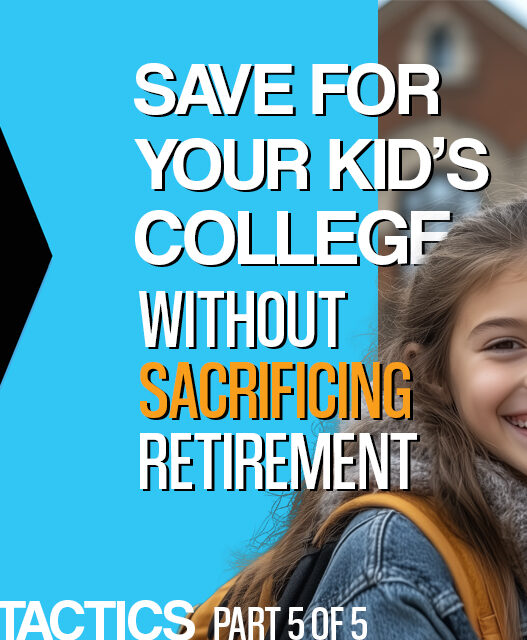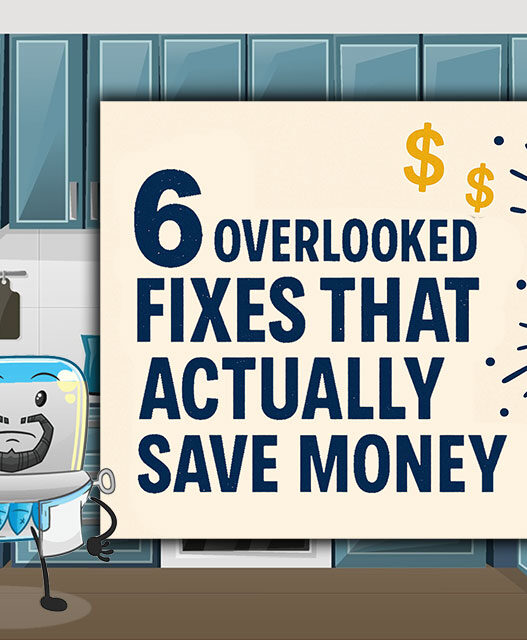The Million-Dollar Baby (No, Not the Movie)
How much does it cost to raise a kid in America? The short answer: a lot. The longer answer: somewhere between a new luxury condo and a wrongful-conception jury award.
In 2024, a jury awarded a Minnesota man $1.1 million after a botched vasectomy led to the birth of his son — the award meant to reflect the cost of raising him and maintaining the family's standard of living.
That figure isn't plucked from the ether. It's uncomfortably close to what many upper-middle-class families will actually spend if they choose private school, full-time childcare, and a college education for their kids.
It's rooted in an earlier 1977 court decision that settlements should balance the “aid, comfort, and society” — essentially, the joy of parenthood — against the cost of having to raise a child you tried to prevent.
For most parents, their costs won't quite hit $1.1 million, but the price tag is still astronomical. The Brookings Institute's pre-pandemic estimate for raising a child from birth to age 17 in a middle-income household was about $310,605 (in 2015 dollars), not including college (ABC News).
Adjusted for post-COVID inflation, that's now well over $389,000. Add in higher housing costs, out-of-pocket healthcare, private K-12 tuition, extracurriculars, and the big one — college tuition — and you can easily near the million-dollar mark.
And yet, is it worth, birthing and rearing a million-dollar baby?
The National Numbers — Then and Now
Let's drill down a bit further on how much parents across the U.S. are spending to raise their child into adulthood.
Based on data from the Brookings Institute, Lending Tree, and Parents.com, here's what families were shelling out pre-inflation and pre-AI:
- Middle-income household, public school, no college: ~$233,000–$384,000 for birth to 18.
- With an in-state public college: ~$450,000–$500,000.
- With an elite private college: ~$500,000+.
Post-inflation, post-COVID reality:
- Middle-income household, public school, no college: ~$310,000–$450,000.
- With in-state public college: ~$450,000–$650,000.
- With elite private college: $650,000–$1,000,000+.
The regional gap runs wide. In rural Mississippi, you might squeak by under $250,000 if you own your home, have a stay-at-home parent, and send your kids to public school. In San Francisco or Manhattan, “just getting by” can push the figure north of $750,000 — and that's without factoring in a single extracurricular.
Where's the Money Going?
Housing is the biggest line item, accounting for about a third of total costs. Childcare and education are next, and those expenses have outpaced general inflation for decades.
Daycare alone can rival mortgage payments in many metro areas. In the Minneapolis, Minn. area, we pay just under $2,000 a month for daycare for our four-year-old.
We're not alone in feeling the squeeze. Nearly half of American families struggle to find affordable childcare. Recent data from the Economic Policy Institute reveals that childcare for one infant costs more than rent in 17 states and more than in-state college tuition in 38 states.
Tack on health care costs and skyrocketing food prices — not to mention the summer camp racket — and you can see your bank account flatlining.
Inflation's Bite
Rising prices are a major hit to any family's budget. When my husband and I go to Panera for breakfast with our two kids, that's a $60 affair. That's one coffee, one hot chocolate, and four breakfast sandwiches.
Inflation is eating us alive.
In the past handful of years since the pandemic, the inflationary cost of raising a child has ballooned far faster than wages.
- Housing prices are up more than 40% in some markets.
- Grocery bills are up roughly 25% since 2020, with certain staples — milk, eggs, and cereal — seeing even sharper jumps.
- Childcare costs — already prohibitively expensive — are rising at nearly twice the overall inflation rate.
Private school tuition has surged as well, with elite schools in major cities charging $50,000–$70,000 per year for K–12. That's before adding aftercare, uniforms, or the $1,200 “mandatory” annual gala ticket.
Even public school parents aren't spared. “Free” education comes with activity fees, supply lists, and the “invitation” to fundraise for everything from band uniforms to playground equipment.
How AI Raises the Parenting Stakes
For decades, parents — especially those in white-collar professions like medicine — justified the costs of raising kids with some mental math: raise the kid right, send them to the right school, and the payoff is seeing them succeed in a stable, high-income career.
Artificial intelligence, however, is quashing that trajectory.
Dario Amodei, CEO of Anthropic, has issued a sober warning: AI could wipe out 50% of all entry-level white-collar jobs in the next 1–5 years.
The Job Apocalypse
Few people are paying attention, Amodei laments. “Most of them are unaware this is about to happen,” he tells Axios. “It sounds crazy, and people just don't believe it.”
Perhaps lawmakers don't understand it or believe it — many business leaders and educators are afraid to talk about it — but the risks are real.
While it's unclear how accurately Amodei's dire predictions will play out, it is clear that AI will replace more and more professional jobs.
Fortune reports that 61% of white-collar workers now believe AI will replace their jobs within three years.
Nearly two-thirds of these same workers believe that they — and their entire team — will be replaced by AI within the next 3–5 years. And still, they're using AI at work daily. (And many are probably investing in AI, too.)
Despite the bleak outlook, most workers aren't panicking — yet. For now, they're enjoying the short-term trade-off of reduced stress and better work-life balance that AI has ushered in.
And some white-collar workers will be less impacted. The deeper you are into your career, the less likely you are to get sidelined. But what does this mean if you're raising kids who'll enter the workforce in 10–20 years? Is it a wasted $500,000 tuition bill for a vanity degree?
Disappearing Safety Net
Already, “safe” professions are shifting. Reliable, well-paying, college-level jobs are becoming increasingly automated.
White-collar workers are increasingly underemployed, working jobs that don't require advanced degrees or college education. There are already more college-educated workers than college-level jobs to go around — I experienced that first hand after college, spending three and a half hapless years as a debt collector.
I eventually made it out on the other side — solid career path in marketing — but it wasn't because of my six-figure tuition bill and long list of extracurriculars. It was guts, grit, and a lot of confidence.
As a mother of two small human beings now, I'm dutifully shoveling money into their college savings — but keenly aware that AI has cheapened the value of their future degrees.
Even frontline jobs dealing with patients and the public are impacted. The medical field is seeing AI-powered diagnostic tools significantly outpace human clinicians in speed and accuracy. In a recent study of 304 complex cases, Microsoft's AI diagnostics tool achieved an 85.5% diagnostic accuracy rate, compared to just 20% for human physicians.
Even for more standard, less complex cases, AI has a first-diagnosis accuracy rate of 20 to 10 percentage points higher than human physicians, making diagnoses 44.5% faster (557 seconds vs. 1,006 seconds) and at a cost of 98% less per differential diagnosis.
College — The $500,000 Question
For a certain slice of parents like doctors, lawyers, and tech execs, college savings are still requisite. Just like seatbelts, helmets, and eating vegetables, saving for your children's financial future is a “good parent” must. The assumption is you'll foot the bill so they can launch debt-free into adulthood, or at the very least co-sign on their student loans.
Even if that four-year college degree is worth it, is it affordable?
Between 1990 and 2024, the average cost of attending a four-year public college rose 163%, and private colleges climbed even higher (MEFA). Add room, board, books, and fees, and a single year at a private university can hit $90,000. Multiply by four, add in inflation, and you're looking at a half-million-dollar outlay.
Pre-inflation parents could perhaps justify college as an “investment” in their child's future earnings. But now, degrees are flirting with obsolescence in fields once considered untouchable.
Snobbery is expensive
College could become irrelevant or out of reach, and yet, my classist survival instincts persist. I desperately want my kids to have the lifestyle and social capital that a white-collar degree brings. “Other” children of “other” parents will have to pivot and mend roads and dig ditches; my kids are going to be scholars and scientists — or at least business analysts.
The New Multiple Choice Reality Check
Already, today's crop of twenty-somethings are struggling in their post-college professional launch. Job listings for traditional, entry-level corporate roles targeting new grads are down by 15%, while the number of candidates per job has risen by 30%.
Although grads fresh out of college have perennially struggled, AI is now taking away white-collar jobs from the least experienced workers. As of last March, the unemployment rate for degree holders aged 22–27 was 45% higher than the nation's overall jobless rate.
It's not just artificial intelligence. Well before AI, the U.S. labor market had an oversupply of degree-holders, creating credential inflation. Many grads were forced into low-wage or non-degree roles, a trend that will only intensify in what Axios calls a “bloodbath.”
Insider analysts suggest caregiving and high-empathy roles are safer bets as they rely on interpersonal skills that AI can't fully replicate. An op-ed on Wired argues that displaced workers should consider sectors like healthcare support (CNAs and personal care assistants), early childhood education, and elder care as these are more stable, albeit low-paying, career options.
Safe Jobs Today
In addition to caregiving work, the BLS indicates other fields with solid prospects over the next 5—10 years:
- Insurance sales
- Elevator and escalator installation and repair
- Aircraft mechanics
- Aircraft cargo handlers
- Heavy vehicle technicians
- Power line installation and repair
- Veterinary assistance
- Wind turbine installation and maintenance
- Solar panel installation and maintenance
- Archival recordkeeping
None of these jobs require college, although many call for boot camps, certificates, vocational degrees, or extensive on-the-job training programs.
Speaking plainly, aspirational parenting in AI means a new multiple-choice reality check. So, are you:
- Paying for a college degree that AI is rendering less meaningful — in a market suffering from degree bloat?
- Or prepare your child for a job in the trades or caregiving?
- Or hustling harder to build generational wealth, which means raising trust-fund kids who are ill-equipped for the rigors of hard work and intellectual challenge?
Alternative Investments in “Legacy” — Cheaper Ways to Get Your Name Etched in Stone
Let's say you're less concerned about bedtime stories and more about perpetuating your family legacy. For the same price as raising a child, you could:
- Endow a scholarship fund at your alma mater (tax-deductible, and you'll get a fancy dinner at least once a year).
- Fund an atrium at your local hospital.
- Name a library reading room after yourself.
- Commission a life-size statue of your likeness at a park.
To be fair, this isn't as emotionally fulfilling as seeing your genetic material toddle into kindergarten. But it's a more predictable return on investment; your name will be there in bronze no matter what the economy does.
You could also set up a donor-advised fund (DAF), grow it over time, and direct the money toward causes you care about. Here, your dollars will have a greater impact. Parenting is philanthropy for one or two; grants reach the masses — and don't interrupt your sleep with late-night feedings.
Parenting ROI in the Post-AI Era
Let's run the numbers one last time:
- Pre-inflation, pre-AI reality: A middle-income family could expect to spend $233,000–$384,000 raising a child to age 18, depending on location and schooling choices.
- Post-inflation, post-AI dystopia: Those figures have ballooned to $310,000–$450,000 nationwide, or as high as $750,000 in high-cost-of-living areas.
And once you factor in college, you're pushing $1 million.
For some, the emotional rewards of parenting still outweigh the financial outlay. But for others, like DINKs, those chasing FIRE, or workers feeling the pinch in high-burnout careers like medicine, the numbers just don't add up.
Yet parenting defies logic. You can't spreadsheet your way into having kids. They are an irrational purchase that adds decades to your working years. My husband refers to our son and daughter as “expensive hobbies.”
He's not wrong. We invest in them, despite market headwinds, out of vanity and vague survivalist delusion that humanity is incomplete without our DNA. If these biological neuroses were not at play, would any sane human being decide to procreate?
Or maybe there is some awareness, which is why parenthood is more “optional” now than ever. Birthrates in Western countries are plummeting. With the cost and commitment of parenting, it's no longer a given that married or partnered couples will have children.
And for those with kids, technology extends your window of responsibility. Twenty years ago, the goal was to get your kid through college — maybe help get them a job (calling in threats or favors where necessary) — and your work was done.
It's no longer the same set-it-and-forget-it game. AI means raising humans who can adapt and readapt to multiple technology shifts throughout their lifetime. Our kids are staring down a cavalcade of new certificate courses and retraining programs every 5-7 years or so.
I could be bankrolling their “lunch money” into my 80s.
Inflation and AI May Have Refocused Parenthood
Philosopher Thomas Nagel tells me not to worry, because life is so absurd that there's no reason for dejection or anguish. In the vast scheme of things, money is meaningless, and we're all cosmic lint.
But it's hard to take comfort in embracing the ironic pointlessness of my children's existence.
Instead, I've found more lasting solace in the words of my friend Taryn. She's a mom of three and an epidemiologist steeped in advanced degrees and practical wisdom.
In our phone conversation, Taryn said she's not frightened at the heightened cost — and diminished value — of college. Yes, AI will take jobs, but displacement always happens with new technology. And her kids may turn out blue-collar, but “some people do way better in tactical jobs and that's okay,” and “trades are a better bet right now” in terms of ROI.
Elitism is the real enemy to battle; it's what pilfers savings and forces us into debt.
Taryn lived lean and qualified for Medicaid during her first year post-doc in Seattle, while watching med school friends take out specialized loans to pay for their children's daycare. And the blue-collar people she knows are making good money — and just plain happier.
“Honestly,” said Taryn, “the kids I have met that do the worst adulting are the ones that come from upper-middle-class privilege. Not so privileged as to have a trust fund, but privileged enough to expect a standard of living way too high.”
I've seen it too, and realize that inflated expectations have always been the real enemy of parenting — and frugal living and the FIRE movement. Thus, maybe AI and our current inflationary woes have rewritten the rules of parenting for the better. It's shifting my personal goal from raising educated, “successful” kids to raising thriving, well-adjusted adults.
In this reality, I can focus on enjoying childhood with them, knowing that academic prowess and a college-centered life are not prerequisites for fulfillment, success, or economic viability. If AI and inflation have stolen the promise of raising perfect kids, maybe that's a gift — because what's left is the chance to raise happy ones.



















